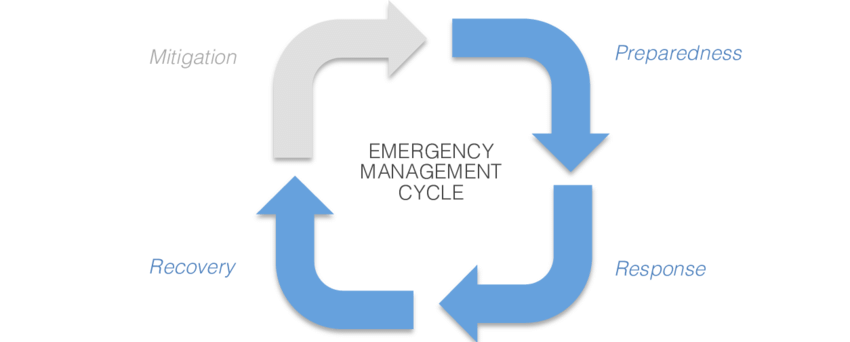Emergency Response Plan
(ERP)
Importance of Emergency Response Plan (ERP)
This ERP was developed to ensure a systematic organizational structure to facilitate the actions that need to be taken in the event of any incident/emergency in the campus. It is a basic procedure to help protect life and property through the resources available on campus. This plan also explains the duties and responsibilities (students and staff) at all levels in the event of any incident.
This ERP was developed based on the following assumptions:
- The University will always be exposed to the impact of the hazards that have been described and the increase of hazards in the future.
- There may be major disasters or repeated emergencies.
- Appropriate mitigation actions can prevent or reduce the amount of related losses as a result of incidents/accidents.
- Through the emergency plan, emergency action training and building evacuation training (fire drill) will increase the level of preparedness for emergency action.
Phases of Emergency Management

Emergency management involves four phases namely PREPAREDNESS, RESPONSE, MITIGATION and RECOVERY.
Overall the four phases of emergency management work together to minimize the impact of an emergency on people, property and infrastructure and ensure that affected communities can recover and return to normal as quickly as possible.
PREPAREDNESS
The goal of this phase is to ensure that people, organizations and communities are prepared to respond to emergencies. This phase involves developing an emergency plan, training and exercises to ensure people know what to do in an emergency. Examples of preparedness measures include developing an emergency response plan, conducting drills and exercises, and stocking emergency supplies.
RESPONSE
The goal of this phase is to respond quickly and effectively to an emergency. This phase involves activating the emergency response plan, mobilizing resources, and coordinating response efforts. Examples of response measures include evacuating people from the danger zone, providing medical aid to the injured, and securing the affected area.
MITIGATION
The goal of this phase is to prevent or reduce the impact of disasters and emergencies on people, property and infrastructure. This phase involves assessing risks, identifying vulnerabilities, and implementing measures to reduce or eliminate risks. Examples of mitigation measures include strengthening buildings, creating fire barriers, planting fire-resistant vegetation, and constructing levees or flood walls.
RECOVERY
The goal of this phase is to restore normalcy after the emergency. This phase involves assessing damage, repairing or rebuilding damaged infrastructure, and providing assistance to those affected by the emergency. Examples of recovery measures include rebuilding damaged buildings, providing financial assistance to those who have lost property or income, and restoring essential services such as electricity and water.
Roles and Responsibilities
-
- If an emergency is in or near your research area, report directly to the Incident Commander about hazardous materials and activities in the space. This will help ensure the safety of emergency responders and the resumption of normal operations as quickly as possible.
- Participate in building evacuation drills and conduct drills as needed.
- Inform and assist contractors/visitors who are unfamiliar with the building's emergency action procedures before and during an emergency.
- The workplace management should orient new employees regarding emergency measures.
- Familiarize yourself with the guidelines here for evacuating, sheltering or staying put if you are a person with a disability.
-
- Familiarize yourself with the building and Emergency Procedures and be prepared to provide instructions to students attending your class in the event of an emergency.
- Orient students by giving a brief overview of Emergency Action procedures on the first day of class for :
1. Provide general information related to emergency procedures;
2. Inform students that evacuation is required when the alarm system is activated; and
3. Inform students of the location of the nearest exit and designated meeting place. - Responsible for taking care of the lecture room in the event of an emergency and the alarm goes off.
- Contact the relevant security agency.
- Familiarize yourself with transfer options for people with disabilities.
-
- Familiarize yourself with the building and Emergency Response Procedures and act in the event of an emergency.
- Respond to building alarms and immediately evacuate to safety.
- Follow evacuation instructions from ERT, police and fire representatives.
- Wear a face covering when inside the building and continue to wear it outside in designated evacuation areas.
 English (UK)
English (UK)  Bahasa Melayu
Bahasa Melayu 




